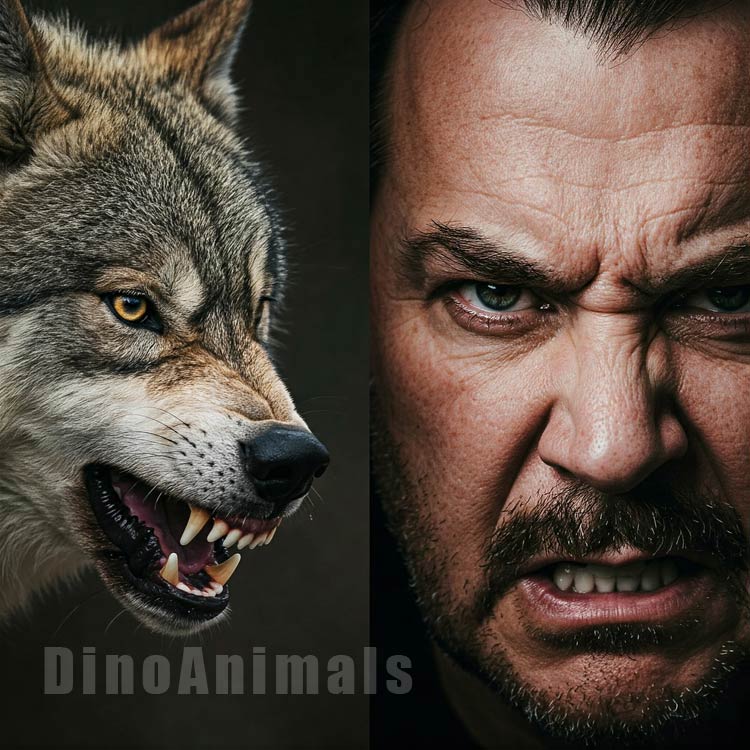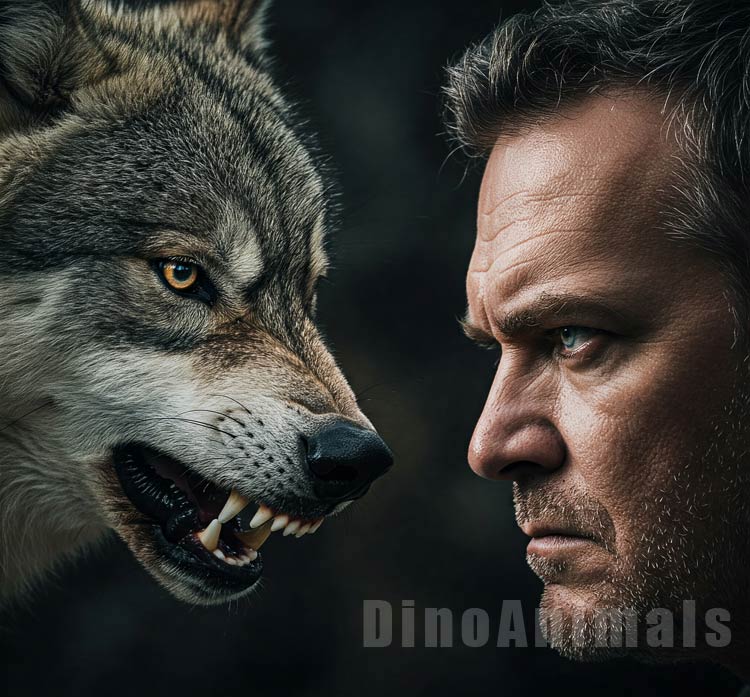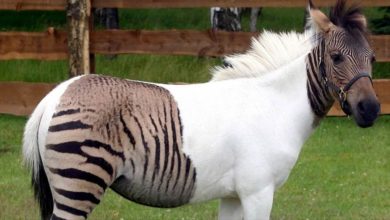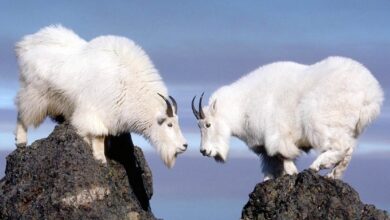Man is a wolf to man – time to debunk a harmful myth
The saying “man is a wolf to man” (from Latin: homo homini lupus), attributed to the Roman playwright Plautus, has for centuries functioned as a metaphor for human ruthlessness, cruelty, and selfishness. In popular imagination, the wolf (Canis lupus) appears as a wild, solitary predator, ready to attack anyone who crosses its path. But is this dark image of the wolf consistent with reality, and does the famous saying accurately describe human nature? Let’s take a closer look at this, contrasting stereotypes with facts about wolves and human behavior.

Wolf – symbol of cruelty or cooperation?
Contrary to popular associations, the wolf (Canis lupus) is not a solitary hunter but a highly social animal. As we described in the article “The Role of the Pack in Wolves,” the life of wolves is based on functioning within a pack – a hierarchical group where cooperation, loyalty, and harmony are fundamental to survival.
Wolves rarely exhibit aggression towards members of their own pack. A complex communication system – from vocalizations to subtle gestures and rituals – and a clearly defined hierarchy effectively prevent internal conflicts. Within the pack, wolves hunt together, share prey, carefully care for offspring, and protect the weaker ones. Their infamous “predatory nature” is directed outwards – towards prey or intruders violating their territory – and not against each other.
Far from being a symbol of ruthlessness towards its own, the wolf proves to be a master of solidarity and mutual support. Acts of aggression within the pack are incidental, usually provoked by extreme conditions such as a fight for leadership or a severe lack of food. Wolves in a pack are more like siblings to each other than enemies, which forces us to seriously re-evaluate the famous saying.

How do we, humans, fare in this context?
And how do we, humans, fare in this context? Comparing a wolf pack to human societies, it is easy to notice the differences. Unfortunately, the contrast with the wolf pack can be striking. It is humans who are capable of extreme selfishness, betrayal, cruel violence, or sophisticated manipulation towards members of their own species – traits that are wrongly attributed to wolves.
The history of humanity is rife with conflicts, wars, and harm inflicted in the name of personal gain or group interests. Unlike wolf societies, where harmony is the norm, humans all too often turn against each other, even within their closest “pack” – family, local community, or nation.
Is the wolf, then, an accurate metaphor for human nature? Not entirely. If we are to look for an animal that better reflects the conflictual aspect of humanity, spotted hyenas (Crocuta crocuta) would be a better fit. In their clans, rivalry is brutal, and fights for dominance or resources can be fierce and chaotic. Unlike wolves, hyenas more often direct aggression towards members of their own group, which resembles human tendencies towards internal conflicts.
Perhaps, then, instead of “man is a wolf to man,” we should say “man is a hyena to man”? or Is it really a dog-eat-dog world?

Where did the saying come from?
The saying “man is a wolf to man” (homo homini lupus) originated in times when knowledge about wolves was limited, and their image in culture was based on fear and myths. In antiquity and the Middle Ages, the wolf embodied wildness and danger – it was perceived as a solitary predator, lying in wait for people and their property.
This stereotype dominated folklore and literature, despite the fact that in reality, wolves rarely attack people, and their life is centered around the pack. Plautus, writing his comedies in the 3rd century BC, most likely referred to this common perception, not the true nature of wolves.
Today, thanks to the research of ethologists and ecologists, we know that wolves are the opposite of the stereotype of a solitary, cruel hunter. In a pack, a wolf is a loyal partner, a caring guardian, and a brave defender, ready to make sacrifices for the good of the pack. The proverb is therefore more of a myth and an echo of old fears than the truth about wolves, although it still accurately reflects the darker sides of human character.

A new metaphor?
What’s next for the wolf metaphor? Has the wolf been rehabilitated?
Should we, then, entirely consign the saying “man is a wolf to man” to the dustbin of history? Not necessarily. As a metaphor, it still holds power – it pointedly highlights the human tendency to harm others. However, in light of contemporary knowledge about wolves, its original meaning requires revision. The true wolf in its pack is, after all, a brother, a guardian, and a loyal ally. With humans, unfortunately, it is sometimes different – our “packs,” our communities, are so easily eroded under the pressure of internal rivalry, selfishness, or xenophobia.
Plautus’s proverb, though born of a misunderstanding regarding wolf nature, paradoxically still forces important reflection. Real wolves, those of flesh and blood, give us a valuable lesson: life in a group can, and even should, be based on cooperation, trust, and mutual care.
So, instead of identifying with the wolf from dark legends, perhaps it is worth drawing inspiration from the real wolf (Canis lupus) – an animal that finds the key to survival and the meaning of existence in the strength and harmony of its pack.

Podcast: Man is a wolf to man
Listen to the podcast “Man is a wolf to man”, in which we tackle the history and truthfulness of this saying in relation to the behavior of wolves in a pack. And we show how we, humans, compare to… wolves.



















